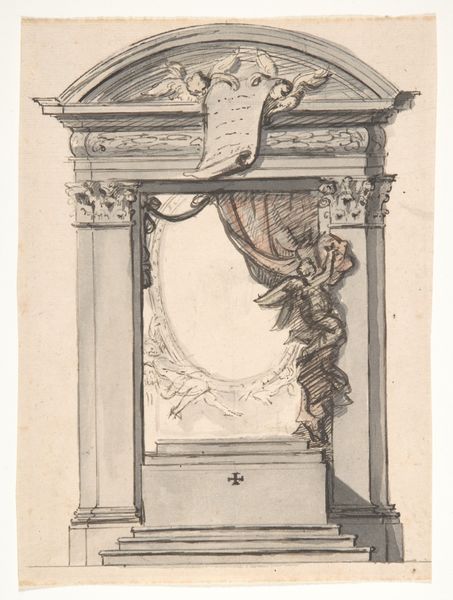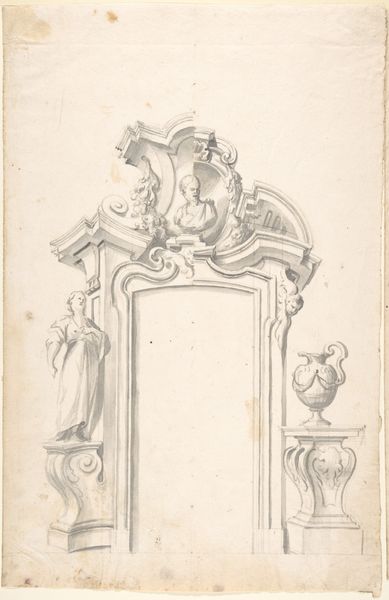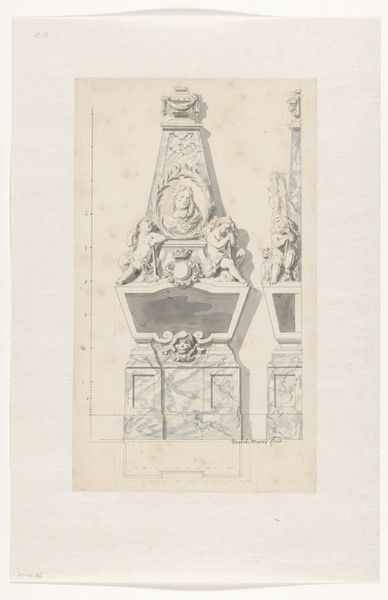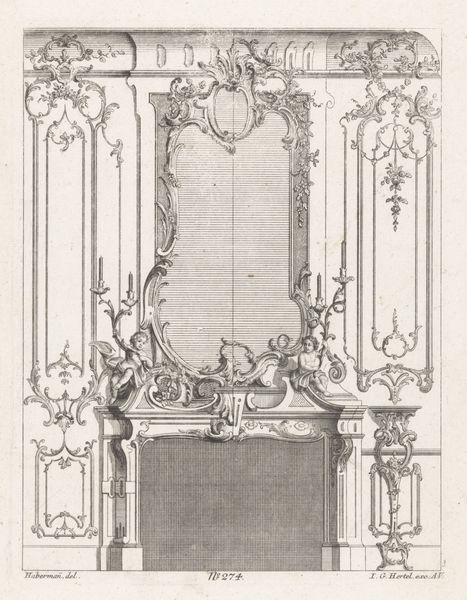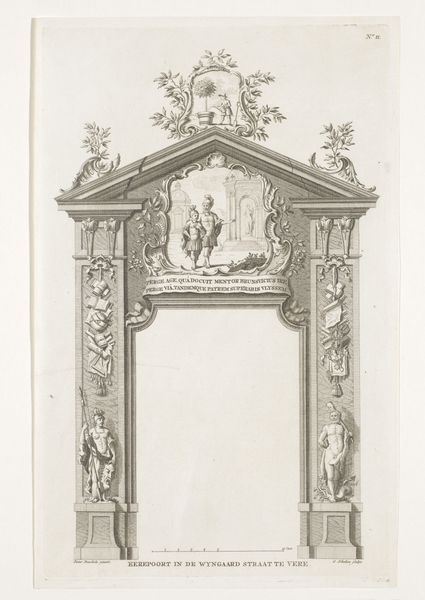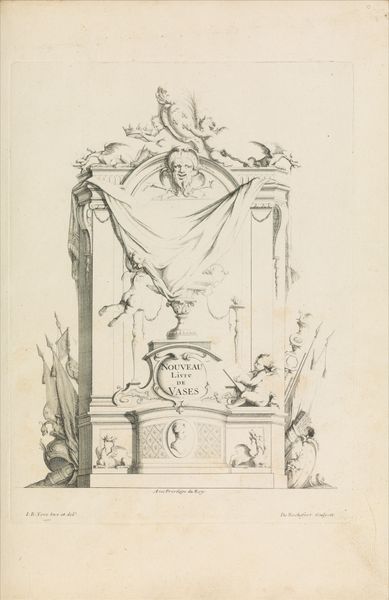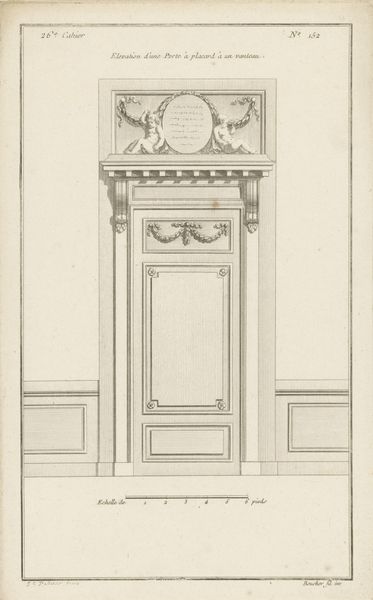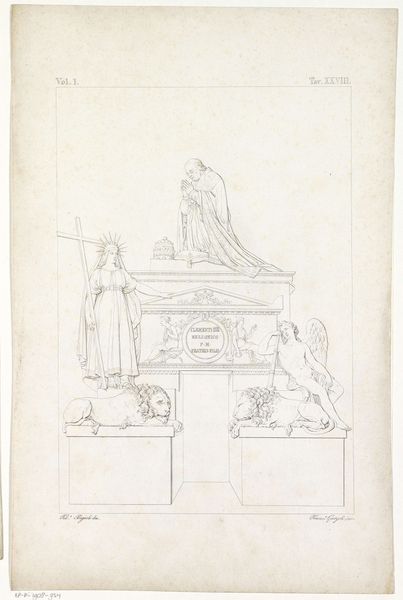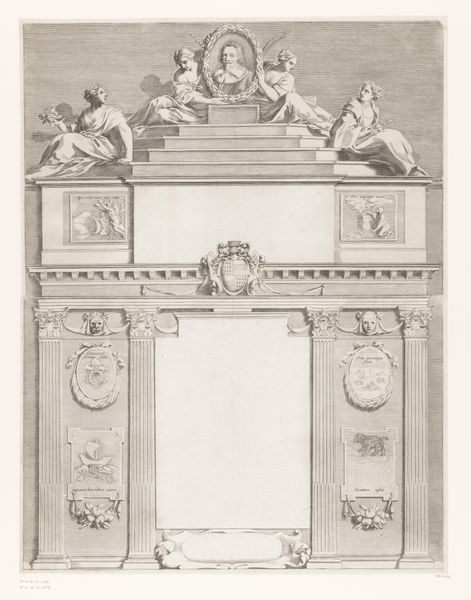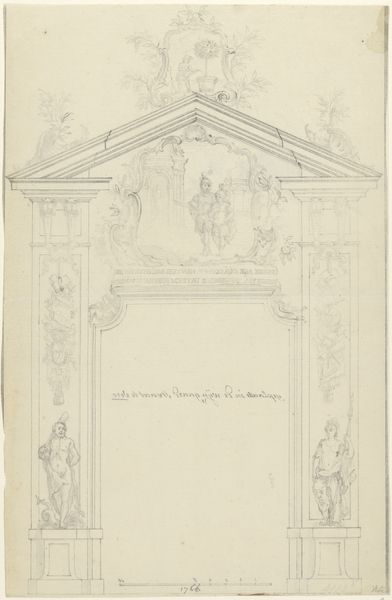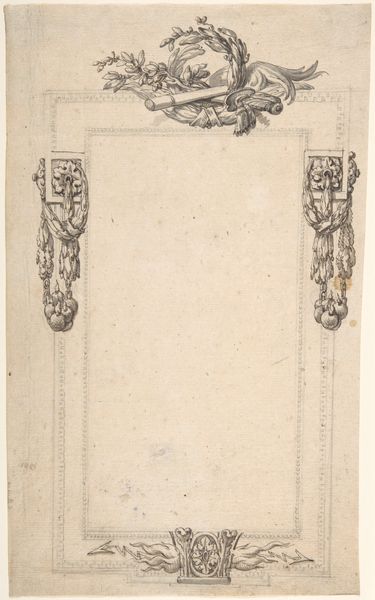
drawing, print, paper, ink, pencil, architecture
#
drawing
#
baroque
# print
#
etching
#
charcoal drawing
#
paper
#
form
#
ink
#
classicism
#
pencil
#
line
#
history-painting
#
academic-art
#
architecture
Dimensions: 17-3/16 x 10-1/2 in. (43.6 x 26.7 cm)
Copyright: Public Domain
Editor: Here we have "Frame for a Painting of Saint Christopher," likely dating from the 1700s, made by an anonymous artist using ink, pencil, and charcoal on paper. It feels so academic in its precise lines. What do you make of its classical structure and ornate detail? Curator: It’s fascinating how this piece highlights the intersection of power, religion, and artistic expression in the Baroque period. These elaborate frames weren't just decorative; they reinforced the Church's authority and shaped how people understood religious narratives. Who was Saint Christopher in that context? Editor: According to the description, he was a historical figure known for carrying the Christ Child across a river, but I'm also reminded how often these saints' stories also functioned as moral instruction or social control? Curator: Precisely. Art served a pedagogical purpose, embedding specific values and expectations. What impact might this visual language have had on viewers, particularly regarding gender and social hierarchies? Editor: Given the opulence and religious context, it probably further cemented traditional gender roles and existing class structures, presenting them as divinely ordained, right? The sheer scale it suggests, if realized, would have been overwhelming. Curator: Absolutely. Consider, too, the way architectural elements within the frame mimic grand cathedrals. It reinforces the Church's dominant presence, but what alternative interpretations could we find by questioning its apparent intent? How does the act of framing, of creating this visual and ideological boundary, impact our understanding? Editor: Thinking about it as ideological framing… I suppose that considering who commissioned the work, and for what audience, is key to unlocking its cultural work, and understanding who might have resisted that message. Thank you. Curator: Indeed. Art, even in its most ornate forms, always invites a critical examination of power dynamics and social construction.
Comments
No comments
Be the first to comment and join the conversation on the ultimate creative platform.
